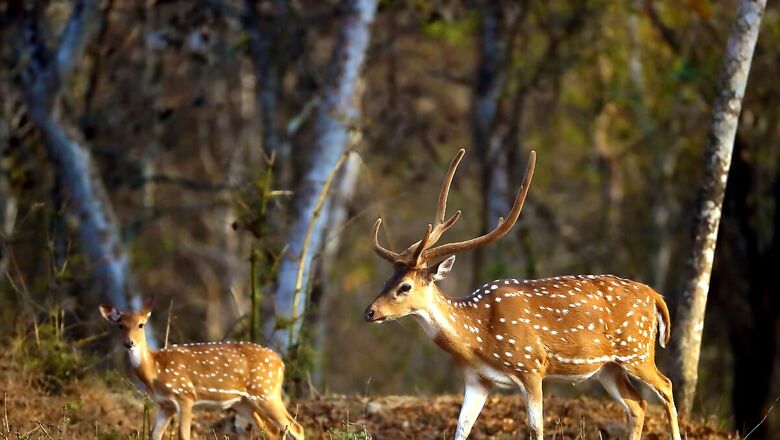
views
After captive-breeding of the African cheetahs in the enclosures in Kuno National Park, India will now undertake captive-breeding of its spotted deer chital, chinkara and blackbuck to ensure there is enough prey available for its imported felines. The decision comes in the wake of “huge shortage of prey base” at Kuno since the translocation took place.
Separate predator-proof breeding enclosures are being set up for chital, chinkara and blackbuck – as was done for the cheetahs. The government’s latest progress report on Project Cheetah has also recommended mass-capture of blackbucks from agricultural fields into Kuno to meet the immediate shortage.
India is desperate to revive the population of cheetahs in the country – despite several serious concerns over the last two years. Eight of the 20 adult cheetahs airlifted from South Africa and Namibia have died due to multiple causes, leaving only 12 adults. All of them remain confined to enclosures set up in the national park since last year – raising questions on the purpose of exercise. The wild beasts have also been captive-bred – producing 12 cubs.
But as the world’s biggest wildlife experiment and multi-crore exercise enters its third year, it now faces a peculiar challenge of dwindling prey base. So far, the Forest department officials have had to manually capture chital, and chinkara from other national parks in Kanha and Bandhavgarh to feed the captive wild beasts. Now it has decided to breed them at the site.
‘HUGE SHORTAGE, NEED IMMEDIATE INTERVENTION’
Captive breeding of prey was not a part of the initial Project Cheetah, which had estimated the chital population at Kuno to be 6,700, and found it to be “adequate” for the cheetahs. In 2021, there were at least 23 chital per sq. km in Kuno, but the number drastically fell to just 17 per sq. km in 2024, said the government’s latest progress report.
The wildlife experts associated with the project have estimated that one leopard/cheetah hunts a chital-sized animal every four days on an average. So, to sustain one cheetah or a leopard, at least 260 prey animals are required every year. Since, Kuno currently has about 91 leopards and 12 adult cheetahs, it would require around 23,660 and nearly 3,120 prey animals respectively – much more than the current chital population of 6,700.
To make matters worse, the population of other prey has also been found to be very low, and since their growth rate is low too, they are not suitable contenders for breeding.
SET UP PREDATOR-PROOF BREEDING ENCLOSURES
Pressing on the urgency of the issue, the latest report has directed “immediate prey augmentation (initially chital)” in Kuno. “At least 1,500 chital have to be brought to Kuno to increase the prey base. Additionally, it is necessary to maintain chital populations in predator-proof enclosures to ensure a consistent supply of prey,” the annual report noted.
The forest department has already started setting up the breeding enclosures. As per the plan, one predator proof enclosure size of 1 sq km can accommodate 24 adult females and six males. “If all females breed and 24 fawns are born and a conservative estimate of two-thirds survive, there will be an addition of at least 16 animals annually. Under such settings, for initially breeding 100 chital annually, at least six predator-proof enclosures have to be constructed at various locations,” the ambitious plan noted.
The government is also eager to bring the next batch of eight cheetahs before the year-end to Gandhi Sagar Wildlife Sanctuary where they will be kept within a fenced area of 64 sq km. All the leopards in this area are being captured and shifted outside. But the wildlife sanctuary is not believed to be suitable for chital, so instead, the report has recommended captive breeding of chinkara and blackbuck at the site.
Three predator proof enclosures, one of 90 hectares, and two of 50 hectares each, have already been established for captive breeding of the prey inside the fenced area for cheetah release. The breeding of prey will have to be regularly carried out until they reach the level of self-sustenance, as per the plan.

















Comments
0 comment